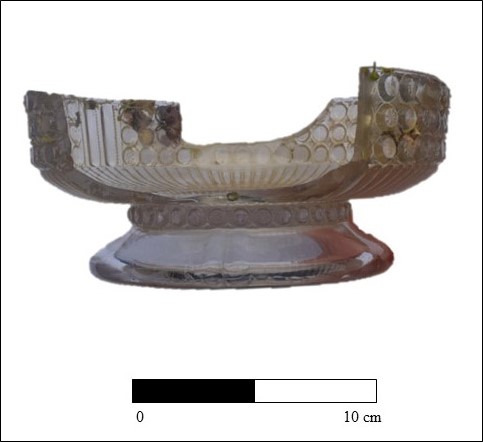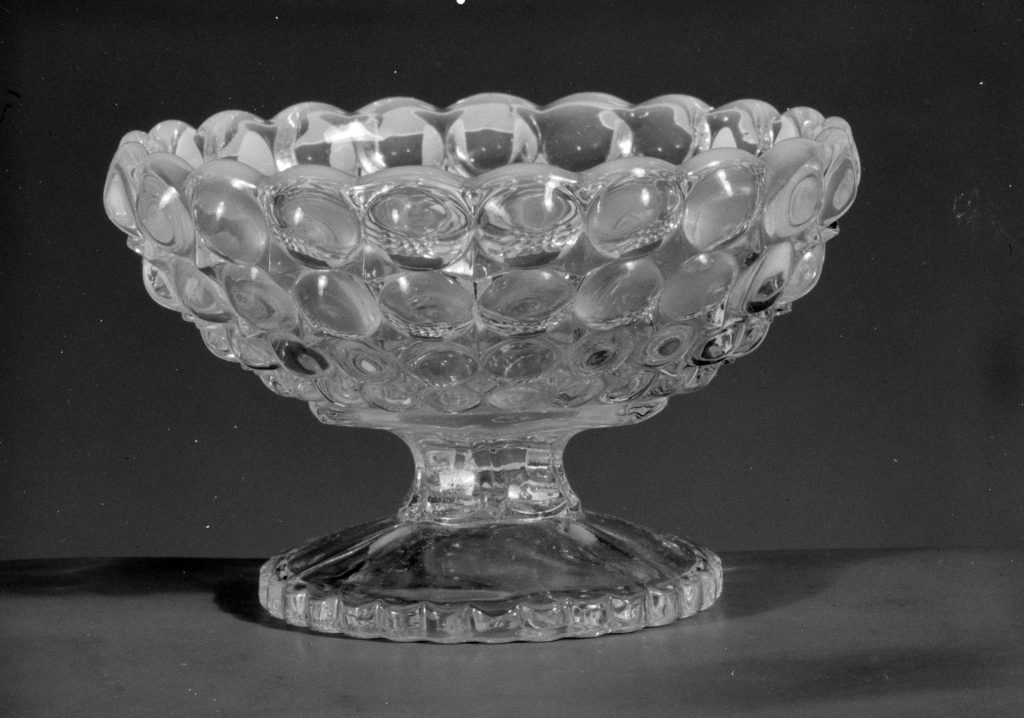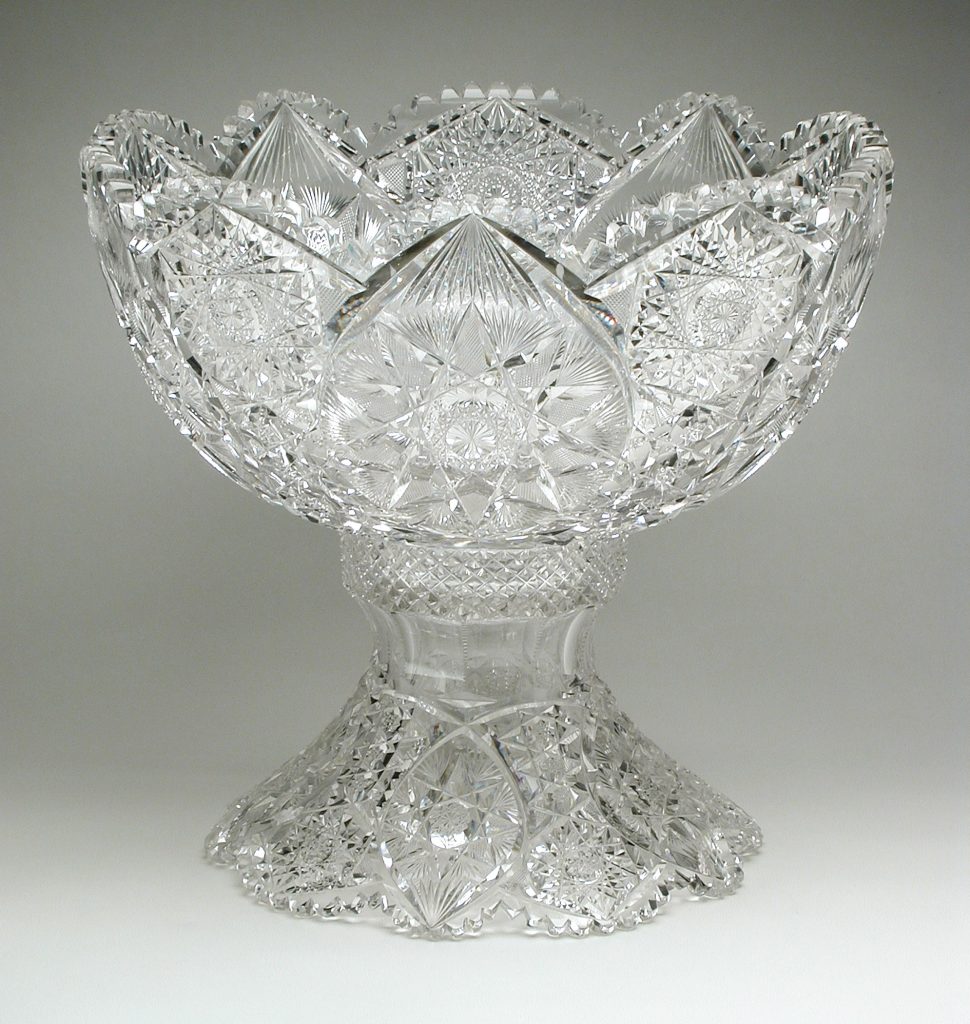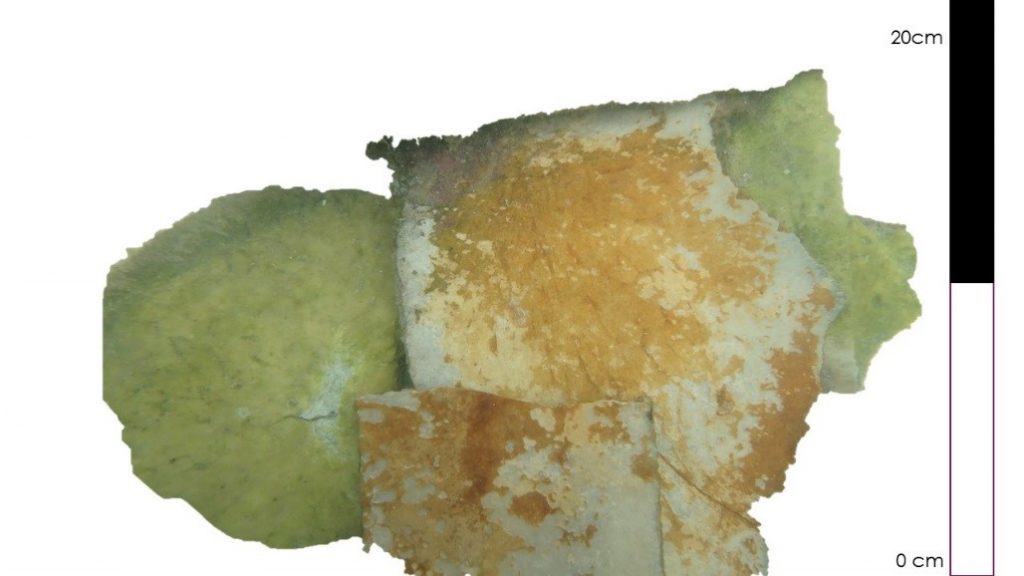UNDER CONSTRUCTION

This bowl was found outside the survey area near the shore. Based on the design, the bowl could have been made by process called cutting glass or pressing Glass
Cut glass began in 1st century AD with the Romans.The modern process of cutting glass began in Germany in the late 16th century. This process soon was used by multiple countries including England, Ireland, and the US. The process of cutting glass involves using a large metal wheel coated with fine wet sand and while the wheel is turning, the glass is pressed to the wheel. the wheel is turned slowly so the glass wont’ break. the wheel then creates the patterns on the glass. The process is continued on different wheels, based on the design (Encyclopedia Britannica 1998a).
The process of molding, or pressing glass, began in 5 BC with the Egyptians, but it did not become popular until the 1800s when the first glass pressing machine was sold and used. The process of pressing glass is simply pushing the molten glass into a mold and expanding the glass to fill it. The main difference between the processes is the presence of a seam and the quality of the glass used (Encyclopedia Britannica 1998b. More research is needed to identify the process that created the designs on this bowl.


Organic Artifacts
Organic artifacts located within the grid and directly outside of the shoreward baseline AA include wood planks, turtle shell and long sticks of cut and processed bamboo used for turtle traps and beach homes.

There is ample oral and documentary evidence of turtle hunters in the area, including on the beach in proximity to the site. The settlement of Cahuita is clearly linked to the presence of turtle hunters such as the Smith family. A plaque in the town center of the small village of Cahuita, Costa Rica informs
Cahuita was created in the 19th century with the arrival to our coasts of English-speaking turtle hunters who sailed from Bocas del Toro and Nicaragua and settled provisional camps during seven months, from March to September. In addition to turtle hunting, they also plant some products for their survival. The first of them were the Smith family who settled their fishing camp in 1828 where today is known as ‘Punta Cahuita. This is how the village was created.
Turtle hunting of green turtles (Chelonia mydas) and hawksbill (Eretmochelys imbricata) was a popular activity in the Caribbean, often driving migrations of families and communities to new seasonal hunting grounds. Afro Caribbean Hunters followed turtle migrations that left from Nicaragua to nesting areas in Costa Rica like Tortuguera and Cahuita from May through June (Crawford and Perez 2016).
It was complemented with planting tropical crops, sailing boats to conduct a variety of trade transactions along the coast, and opportunistic scavenging of ships and people that wrecked on the coral reefs. For men who came from Panama or Nicaragua, there were also Mosquito Indian women to take as wives who undoubtedly had knowledge of surviving in the environment and connections with the local communities. The Punta Cahuita community was no exception.
Reference
Encyclopedia Britannica
1998a “Cut Glass, Decorative arts”. Encyclopedia Britannica, Britannica.com
https://www.britannica.com/art/cut-glass.
1998b “Pressed Glass”. Encyclopedia Britannica, Britannica.com. https://www.britannica.com/technology/pressed-glass